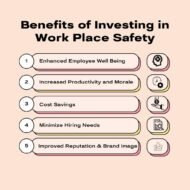Currently Browsing: Labor Management
Posted by Managementguru in Operations Management, Productivity, Supply Chain Management
on May 24th, 2024 | 0 comments

Managing a supply chain effectively is critical to the success of any business. The supply chain incorporates all activities involved in a product’s production and delivery, from sourcing raw material to final delivery to the customer. Efficient and effective supply chain management ensures that products are produced and delivered at the right time, in the right quantities, and at the right cost, ultimately leading to customer satisfaction and business profitability. Here are key strategies for managing a supply chain successfully. 1. Develop a Strategic Plan Aligning the supply chain strategy with overall goals is essential. This involves understanding the company’s long-term objectives and ensuring that the supply chain helps these goals. For example, if a company’s goal is to achieve rapid market growth, the supply chain must be flexible and scalable. Identifying potential risks, such as supplier reliability, geopolitical issues, or natural disasters, is critical. Developing a risk management plan to closely mitigate these risks, including having backup suppliers and contingency plans in place, helps in managing uncertainties. Implementing advanced technologies such as enterprise resource planning (ERP) systems, data analytics tools, and supply chain management software enhances visibility and control over supply chain processes. A supply chain consultant can guide you through a strategic plan. 2. Build Strong Relationships with Suppliers Fostering strong relationships with key suppliers through regular communication can lead to better pricing, improved quality, and more reliable supply. Continuously evaluating supplier performance based on criteria such as cost, quality, reliability, and delivery times helps in making informed decisions about supplier selection and retention. Developing long-term partnerships with reliable suppliers can result in mutual benefits such as joint product development, better terms, and increased stability in supply. 3. Optimize Inventory Management Using advanced forecasting techniques to predict customer demand accurately helps in maintaining optimal inventory levels, reducing the risk of stockouts or excess inventory. Implementing just-in-time (JIT) inventory management reduces inventory holding costs by only receiving goods when they are needed in the production process, thus minimizing inventory levels. Enhancing visibility into inventory levels across the supply chain through inventory management software ensures that you can respond to changes in demand or supply. 4. Implement Lean Manufacturing Principles Adopting lean manufacturing principles to eliminate waste in the production process involves identifying and removing non-value-added activities, improving process efficiency, and reducing costs. Fostering a culture of continuous improvement in the supply chain encourages employees to identify areas for improvement and implement changes to enhance efficiency and quality. Implementing robust quality control measures ensures that products meet the required standards, reducing the risk of defects and returns and improving customer satisfaction. 5. Leverage Data and Analytics Using data analytics to make informed decisions about supply chain operations involves analyzing data on supplier performance, inventory levels, and logistics to identify trends and areas for improvement. Implementing predictive analytics helps anticipate future demand and supply chain disruptions, aiding in proactive planning and reducing the impact of unexpected events. Establishing key performance indicators (KPIs) to measure supply chain performance and regularly reviewing these metrics helps assess the efficiency and effectiveness of supply chain operations, identifying opportunities for improvement. Conclusion Effective supply chain management is essential for achieving business success. By developing a strategic plan, building strong relationships with suppliers, optimizing inventory management, enhancing logistics, implementing lean manufacturing principles, leveraging data and analytics, and focusing on customer satisfaction, businesses can create a robust and efficient supply chain. These strategies help in reducing costs, improving quality, and ensuring timely delivery, ultimately leading to increased customer satisfaction and business profitability. Continuous improvement and adaptation to changing market conditions are key to maintaining a competitive edge in today’s dynamic business...

Posted by Managementguru in How To, Human Resource, Productivity, Stress Management, Work Environment
on May 21st, 2024 | 0 comments

Workplace wellbeing is vital for any organisation that wants to thrive. When employees feel positively about their work environment and are supported in their physical and mental health, they are more engaged, productive and loyal. As a manager, you play a key role in cultivating workplace wellbeing and it should be a top priority. Here are some of the main reasons why taking action to improve wellbeing will benefit your team and organisation. Improved Employee Health Unhealthy, high-stress work environments can negatively impact employees’ physical and mental health over time. This can lead to increased absenteeism as well as presenteeism, where employees come to work but are not fully productive due to health issues. By making wellbeing a priority and implementing initiatives to promote healthy lifestyles, nutrition, exercise and work-life balance, you can dramatically improve your team’s health. Employees who feel cared for in this way will be more motivated and energised at work. Increased Engagement and Productivity When employees are mentally and physically well, they will be more engaged with their work. Wellbeing initiatives show workers that they are valued, which increases loyalty and motivation. Things like wellness challenges, mental health support and stress management assistance also provide workers with tools to cope better at work, making them more productive. A Gallup study found that teams with high wellbeing are 21% more productive than those with poor wellbeing. Investing in wellbeing boosts your bottom line. Lower Absenteeism and Turnover Unwell or unhappy employees are more likely to take time off work or leave their jobs altogether. Absenteeism and turnover cost UK companies billions each year in lost productivity and recruitment/training expenses. By making workplace wellbeing central to your management strategy, you can substantially reduce absenteeism caused by preventable health conditions. You’ll also boost retention rates by showing employees you care about their welfare. This saves you substantial amounts of time, money and disruption. Improved Company Culture and Reputation Focusing on wellbeing helps create an engaged, collaborative and supportive company culture. Things like wellness activities, mental health days and health insurance build camaraderie between employees and make them feel cared for. Word spreads, making your company more attractive to top talent. Prioritising wellbeing can also boost your external reputation with customers and stakeholders who want to associate with socially responsible businesses. This gives you a competitive edge. Taking Action on Workplace Wellbeing Improving workplace wellbeing requires an active, ongoing commitment from managers. Here are some steps you can take: Survey employees regularly on wellbeing needs Provide education/training on health, stress management and work-life balance Offer counselling, EAPs and mental health support Encourage physical activity through discounts and workplace facilities Monitor workloads and adjust to prevent burnout Support healthy nutrition and sleep habits Foster social connections between employees Lead by example when it comes to wellbeing practices Work with a workplace happiness expert like The Happy Business School for more advice. Making employee health and wellbeing a true priority takes effort but pays off enormously. A thriving, supportive and positive work environment is critical for attracting talent, driving productivity and living up to your duty of care as an employer. By taking purposeful action as a manager, you can make a real...

Posted by Managementguru in Productivity, SEO, Social Media
on Aug 29th, 2023 | 0 comments

In the ever-evolving world of social media, keeping up with the latest trends and strategies can be a daunting task. Whether you’re a seasoned social media marketer or just starting to build your online presence, having a comprehensive cheat sheet at your fingertips can make all the difference. In this guide, we’ve compiled 50 essential tips to help you navigate the complex landscape of social media. From understanding your audience to mastering platform-specific techniques, this cheat sheet is your go-to resource for boosting engagement, building your brand, and staying ahead of the curve. Here are 50 social media tips: Know Your Audience: Understand your target audience’s interests and preferences. Consistent Branding: Maintain a cohesive brand identity across all platforms. Content Calendar: Plan and schedule posts in advance. Use Hashtags: But don’t overdo it. Engage with Followers: Respond to comments and messages promptly. Quality over Quantity: Focus on creating valuable content. Visual Appeal: Use high-quality images and graphics. Video Content: Incorporate videos for higher engagement. Storytelling: Share compelling stories related to your brand. Leverage User-Generated Content: Repost content from your followers. Analytics: Regularly review insights and adjust your strategy. Timing Matters: Post when your audience is most active. Platform Specific Content: Tailor content to each platform’s audience. Live Streaming: Host live events and Q&A sessions. Influencer Collaborations: Partner with influencers in your niche. Community Building: Foster a sense of community among your followers. Educational Content: Share informative content. Behind-the-Scenes: Show the human side of your brand. Contests and Giveaways: Boost engagement with these activities. Ad Campaigns: Consider paid advertising for wider reach. Profile Optimization: Use keywords in your profile for discoverability. LinkedIn Networking: Connect with industry professionals. Twitter Chats: Participate in or host Twitter chats. Instagram Stories: Use interactive features like polls and questions. Pinterest Boards: Organize content into thematic boards. Facebook Groups: Create or join groups in your niche. Snapchat Geofilters: Use custom geofilters for events. TikTok Trends: Stay updated on TikTok trends and challenges. YouTube SEO: Optimize video titles and descriptions. Google My Business: Update your business listing regularly. Email List Building: Promote your social channels in emails. LinkedIn Articles: Publish long-form content on LinkedIn. Geo-Tagging: Add location tags to posts for local visibility. Pinterest Keywords: Use relevant keywords in descriptions. Twitter Lists: Organize accounts you follow into lists. Instagram Reels: Create short, attention-grabbing videos. LinkedIn Endorsements: Give and request endorsements. Facebook Insights: Dive deep into audience demographics. Pinterest Analytics: Track which pins are driving traffic. YouTube Playlists: Group related videos together. Tag Relevant Accounts: Increase visibility by tagging others. Pin to Top: Feature important posts on your profiles. Monitor Mentions: Keep tabs on when your brand is mentioned. Use Emojis: Emojis can add personality to your posts. Create Infographics: Share data in a visually appealing way. LinkedIn Recommendations: Request and give recommendations. Facebook Live: Stream live events and updates. Pinterest Rich Pins: Enable rich pins for product details. Tweet Polls: Engage followers with interactive polls. Stay Updated: Social media is ever-evolving; stay current with trends and algorithm changes. Loading…...

Posted by Managementguru in Employee Safety, Human Resource, Productivity, Work Environment
on Jul 11th, 2023 | 0 comments

In today’s rapidly changing business landscape, organisations are constantly looking for ways to enhance their performance and maintain a competitive edge. While many factors contribute to a company’s success, one aspect that should never be overlooked is workplace safety. Investing in safety measures not only protects employees from harm but also yields significant benefits for businesses. In this article, we will explore why workplace safety is a smart business decision, considering both the immediate and long-term advantages it offers. Enhanced Employee Well-being By prioritising workplace safety, organisations demonstrate a commitment to the well-being of their employees. Safe working conditions foster a sense of trust, respect, and loyalty among the workforce. When employees feel safe and valued, their morale and job satisfaction increase, leading to improved productivity and reduced turnover rates. Something as simple as a good pair of work boots could save lives with a prevented slip, so investing in quality will be felt throughout the organisation. Increased Productivity and Efficiency Safety investments often go hand in hand with process improvements and risk mitigation strategies. Implementing safety protocols and providing necessary training equips employees with the knowledge and tools to perform their tasks efficiently and effectively. By reducing the likelihood of accidents, injuries, and illnesses, businesses can minimise downtime, maintain continuity in operations, and optimise productivity levels. Safe work environments also promote better focus and concentration, leading to higher quality output and fewer errors. Cost Savings Investing in workplace safety can result in substantial cost savings for businesses in the long run. While there may be upfront expenses associated with safety equipment, training, and compliance, these investments can significantly reduce the financial burden of accidents, injuries, and workers’ compensation claims. By preventing workplace incidents, companies avoid the direct costs of medical expenses, legal fees, and property damage. It helps to bear in mind that businesses with strong safety records often benefit from lower insurance premiums and improved employee insurance coverage terms. Improved Reputation and Brand Image Companies that prioritise safety earn a reputation as responsible and ethical employers. A strong safety culture becomes a valuable selling point for attracting top talent, as job seekers are increasingly concerned about the work environment. By creating a safe and healthy workplace, businesses can differentiate themselves from competitors and build a positive brand image that resonates with customers, partners, and stakeholders. Such a reputation can lead to increased customer loyalty, trust, and ultimately, improved business performance. Compliance with Legal and Regulatory Requirements Workplace safety is not just a moral obligation; it is also a legal requirement. Governments and regulatory bodies set specific standards and guidelines to protect employees’ rights and ensure their safety at work. Investing in safety measures allows businesses to comply with these regulations, avoiding potential penalties, fines, and legal disputes. By staying updated with safety regulations, organisations can demonstrate their commitment to ethical practices and create a culture of compliance, further bolstering their reputation. Investing in workplace safety is undeniably a smart business decision with far-reaching benefits. As businesses navigate the complexities of the modern world, incorporating workplace safety into their strategic plans is not only the right thing to do but also a wise investment that pays off in more ways than...

Posted by Managementguru in Human Resource, Productivity
on Jul 4th, 2023 | 0 comments

Every employer that can, needs to allow their employees to work from home as often as they can. Allowing remote and hybrid working is just smart. It’s how employers like yourself can offer perks that matter most and keep employees for longer. Think they’ll get distracted when working from home? They’re just as distracted at work. If someone comes and asks someone else a question, or just engages in small talk, that’s distracting. In fact, you’re actually more likely to have distracted employees in the office than at home. That being said, WFH can only be possible if the setup at home is good enough. At a minimum, employees need a computer and fast enough internet to seamlessly remote in to the computers that you have at the office. They can then control the computer as they would if they were in the office, only without having to come in. If you need them to be more engaged, then they’ll need an even more advanced setup. It’s perfectly reasonable to only allow WFH if and when your employees’ home offices fulfil this checklist: Fast Enough Internet Fast internet is the bare standard. Set the minimum, and even find better internet for working from home yourself. If your area is covered by fiber optics, for example, you can request that employees who work from home have that internet. Depending on what their job entails, you can even require them to have 1gbps speeds for seamless remote work. A Computer That Can Handle Their Job If your employees work from home the majority of the time, you can also downsize your office and save so much on rent and utilities, but unless you’re providing them with the computer anyway, you’ll want to add some hardware and software requirements for staff who want to work from home either full-time or most-of-the-time. This is particularly important when it comes to security measures and special software. Again, you can get around this most of the time by just using a remote-in system. This way, your computers can have the software and files needed, and your employees just need to be able to run that remote-in software, but it’s up to you and your workflows. Good Quality Video and Audio Seeing someone in crystal clear definition can improve the camaraderie and also communication. That’s why you’ll need your employees to have an HD camera setup and professional mike. These two things alone will help improve the quality of remote meetings and the engagement levels of all your staff. A Great Printer Even with a digital-first mindset, there will always be instances where things need to be printed, scanned, and sent over. That’s why you’ll need your WFH staff to have a great printer that can do it all, and fast. For best results, give your employees a checklist with specific requirements, including the system requirements. This is an absolutely fair compromise if you’re wary of allowing WFH to continue. From there, it’s just a matter of changing your management approach towards a results-focused approach, rather than a time-focused approach. Do this, and you will attract amazing talent that will work hard to stay in such a wonderful working...










